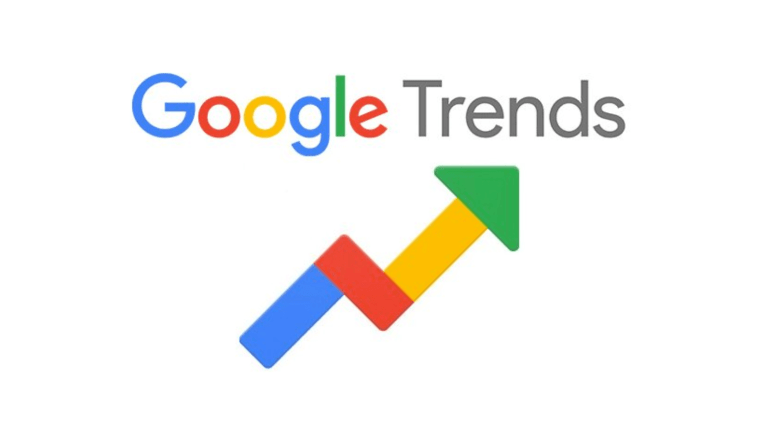Introduction.
In the world of print-on-demand (POD), understanding what your target audience is interested in is crucial.
That’s where Google Trends steps in. This tool can be a goldmine for POD sellers, helping you stay ahead of the curve by tracking exactly what people are searching for.
In this article, I’ll walk you through exactly how to use Google Trends to get the most out of your POD business.
I’ll cover everything from navigating the tool, interpreting the data, and understanding how to make the data work for you.
What is Google Trends?
Google Trends is a free tool that shows the popularity of specific search terms over time. It gives insight into what people are searching for on Google, showing trends across different countries, time frames, and categories.
For POD, this can mean pinpointing which keywords or phrases are hot, identifying seasonal or evergreen topics, and seeing how consumer interest in a niche is changing over time.
Google Trends data isn’t just interesting—it’s actionable.
By applying this information, you can fine-tune your designs, pick the right keywords for your listings, and, ultimately, increase your chances of standing out in a crowded market.
How Do I Use Google Trends for Print-on-Demand?
Start with Broad Searches.
- Begin by typing in broad keywords relevant to your niche. For example, if you’re in the fitness apparel POD niche, try searching for terms like “workout clothes,” “gym gear,” or even “yoga tops.”
- Google Trends will show a line graph with interest over time, which helps you see when these terms are most popular. For instance, fitness-related keywords often peak in January, aligning with New Year’s resolutions.
Compare Similar Terms.
- Google Trends allows you to compare up to five terms at once. This feature is perfect for understanding which variations of a keyword perform best. For example, you can compare “fitness shirt,” “gym tee,” and “athletic top” to see which one resonates more with your audience.
- Look for significant spikes. If “Christmas t-shirt” jumps every December, that’s a clear seasonal opportunity for POD sellers to plan for.
Focus on Seasonal Trends.
- Holidays, major events, and seasonal shifts influence consumer behaviour. Google Trends highlights this by showcasing when topics are at their peak.
- For POD, knowing these trends means you can create products in advance. If “Halloween t-shirts” start trending in September, you’d want to have designs ready to launch by late August.
Use the ‘Related Topics’ and ‘Related Queries’ Sections.
- Google Trends provides related topics and queries that show terms people often search alongside your primary keyword. This section can inspire new design ideas and help identify niche markets.
- For example, if you search for “plant mom,” you might see related queries like “succulent t-shirt” or “plant lover gifts.” These hints can help you narrow down your target market and create more tailored products.
Select Specific Regions.
Google Trends lets you see where certain terms are trending geographically. If you notice that “sustainable clothing” is particularly popular in California, you might want to market your eco-friendly POD products to that region.
Examine Interest Over Time
- “Interest over time” is another powerful feature for POD sellers. If you notice a term gaining traction month after month, it might be an indication that a trend is becoming more mainstream.
- You can adjust the time frame, too. Looking at data from the past five years, for example, can help identify which topics are likely to stick around versus short-lived fads.
Pros and Cons of Using Google Trends for Print-on-Demand
Pros
- Free Tool: Google Trends is completely free to use, making it accessible to everyone from beginners to seasoned pros.
- Real-Time Data: You get instant insights into what’s trending right now, allowing you to act fast and stay relevant.
- Global Insights: You can explore trends across different countries and regions, perfect if you’re targeting a global audience.
- Seasonal Planning: Knowing when keywords peak allows you to schedule product launches around high-interest periods.
- Identify New Niches: The related topics and queries sections can lead to niche ideas that others may not have tapped into yet.
Cons
- Limited Details: Google Trends doesn’t provide exact search volume numbers, which can make it tricky to gauge just how popular a term is.
- Broad Scope: Google Trends is great for identifying general trends but may not capture hyper-specific niches accurately.
- Time-Consuming: If you’re looking to analyze a lot of keywords, combing through each manually can take time.
- Competitive Visibility: Trends show what’s popular across all searchers, so popular trends can lead to increased competition.
- Inconsistent Data for Small Niches: If your niche is very specific, Google Trends data may not be very reliable, as it often focuses on more popular searches.
FAQs
Q: Can I use Google Trends to find keywords for my listings?
Yes, while Google Trends won’t give you precise keyword volume, it can show you which terms are gaining popularity. Use these insights to add trending keywords to your product listings, descriptions, and tags.
Q: How often should I check Google Trends for my POD business?
It depends on your niche. For highly seasonal niches (like holiday items), checking a few months before peak seasons helps. If you’re in a more stable niche, checking monthly or quarterly should suffice.
Q: Does Google Trends work for all POD platforms?
Yes! The data can help improve listings on any POD platform—whether you’re on Etsy, Redbubble, or your own e-commerce site. Just make sure to align your trends research with each platform’s keyword and SEO practices.
Q: What’s the best way to use regional data from Google Trends?
Regional data is fantastic for targeted advertising. For example, if you know a certain trend is popular in the U.S., you could focus your ad spend there. Or, create region-specific designs if you see a localized trend.
Conclusion
Google Trends can be a powerful tool for any POD business, giving you valuable insights into consumer interests and emerging trends.
It allows you to make informed decisions on what to design, when to launch, and where to market, all based on real-time data. With a bit of creativity and some strategy, you can harness this data to create designs that hit the mark with your audience.
So, how will you use Google Trends to shape your POD strategy?





GIPHY App Key not set. Please check settings